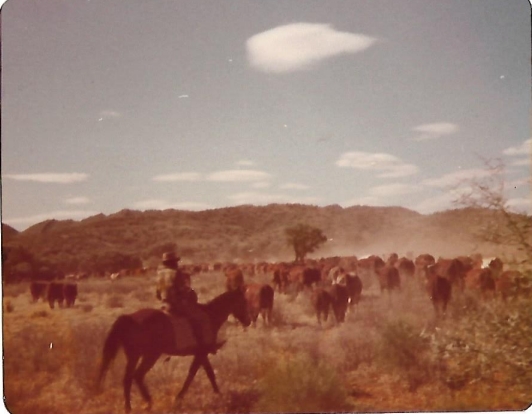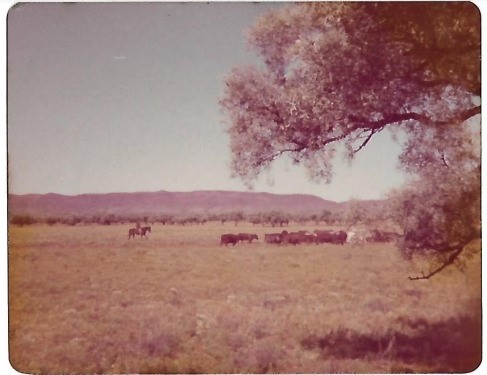Ringwood Station
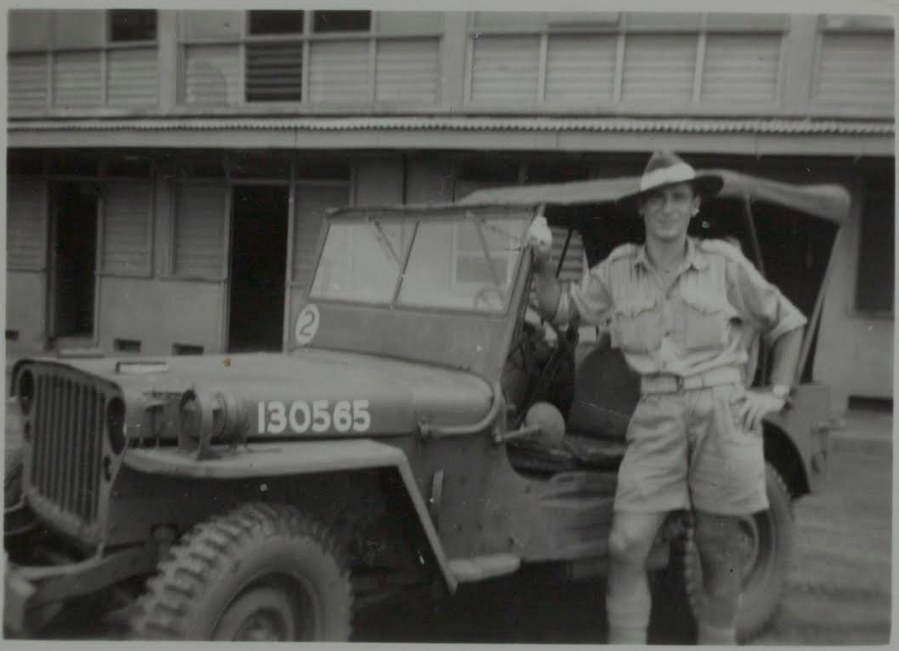
Janet Lane, 2024, with story and photos from Michael Gaynor. Image: Murray Collings, WW2, Territory Stories.
Ringwood Station, N.T. Some fabulous photos and information sent in by Michael Gaynor, thank you so much – we got at least three Ringwood Walers in the 1980’s-90’s.
There’s also a Mt Ringwood station, much further north.
Ringwood was taken up as a Crown Land lease after WW2 around 1953 by Murray and Grace Collings (nee Allen). They took cattle there from Pine Creek.
There were brumbies on Ringwood, of the good old Coulthard – Warburton – Arltunga strain. Alice Springs is 111k to the west, and Santa Teresa 68k away.
In 1954 Murray’s cattle topped the Alice Springs sales. In times of drought, he moved all the cattle away, southeast, until conditions improved. Grace and their daughters Margaret and Judy were also accomplished riders, horses were very important to the family.
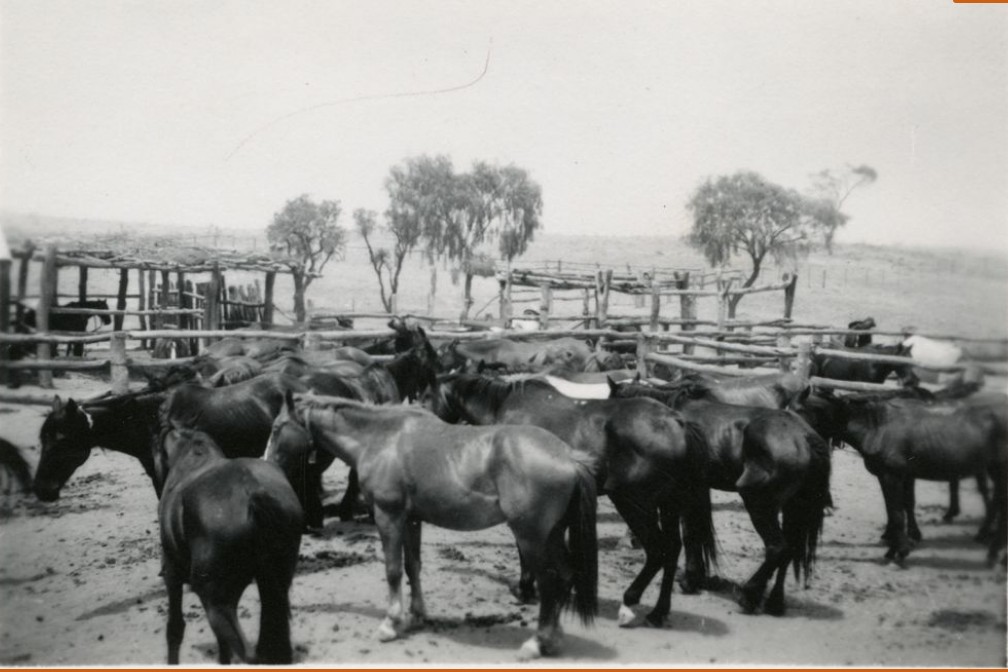
Great background from Michael:
“My sister Christine… mentioned to me that you might like to see a few pics of my time in 1978 as a jackaroo (or “ringer” which is what we called ourselves then) on Ringwood Station, around 90km east of Alice Springs.
I was 18 back then… I finished school in Melbourne, caught the train to Geelong in early February then hitch-hiked to Alice Springs with a stint at the Barossa Valley for a couple of weeks picking grapes on the way. I had an uncle who was a school teacher in Alice Springs and he organised work for me on a couple of cattle stations.
The first station I worked on was called Lucy Creek Station which was about 2400 square km in size. It was located half way between Alice Springs and Mt Isa as the crow flies. I learnt how to ride a horse, muster cattle, brand calves, sleep in the open and eat salt beef and damper. It was pretty tough. There were about 15 people on the station – most of them jackaroos. We would go out for a couple of weeks mustering cattle, brand the calves, select the fat cattle and drove them back to the station. The boss would then organise 3-trailer road trains to take the cattle to market – I believe the cattle were trucked to Alice Springs then railed south to Port Augusta for butchering.
As the ‘newbie from Melbourne’ I received a fair bit of attention and crap work. After about 3 month as winter approached it was pretty cold sleeping under the stars. I got sick and was told I was bludging so I quit and went back to Alice Springs. First time back to the town – it was nice to have a hot shower and sleep in a bed.”
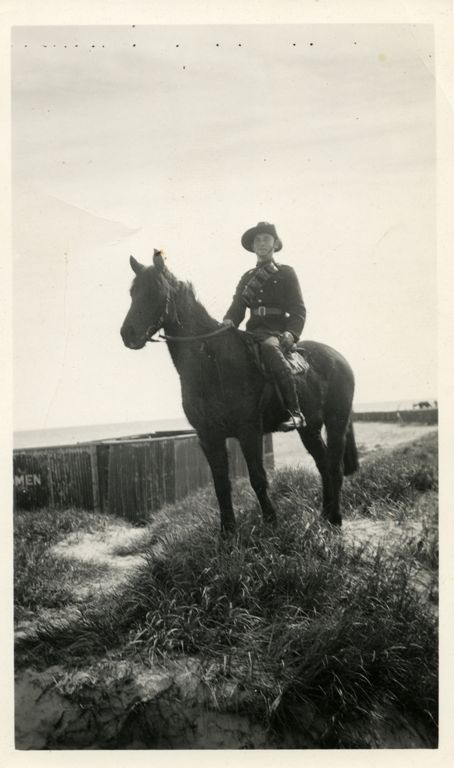
Image: Murray Collings in army uniform on his horse Bill on Glenelg Beach. 1940. Territory Stories. Murray was posted within Australia during the war, he trained with the Light Horse, then was sent to the Territory where he used a horse, motorbike and jeep as required.
“My uncle organised another job for me at Ringwood Station, 90km east of Alice Springs on the edge of the Simpson Desert. It was a much smaller station around 800 square km in size – just the boss, the missus, another jackaroo and myself for most of the time. The boss, Murray Collings, was a WW2 veteran. After WW2 the federal government wanted to open up the NT and they held a ballot for returned servicemen. The boss was picked in the ballot and received the land he then called Ringwood Station. He and the missus had to build the station from scratch.”
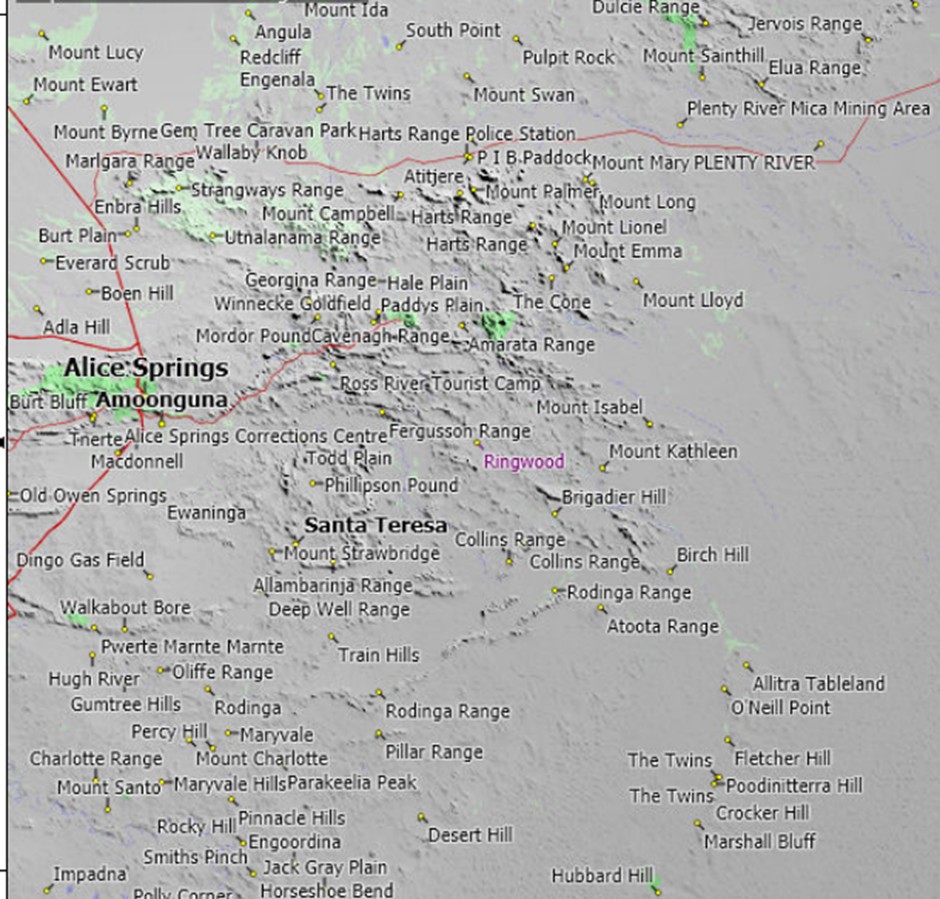
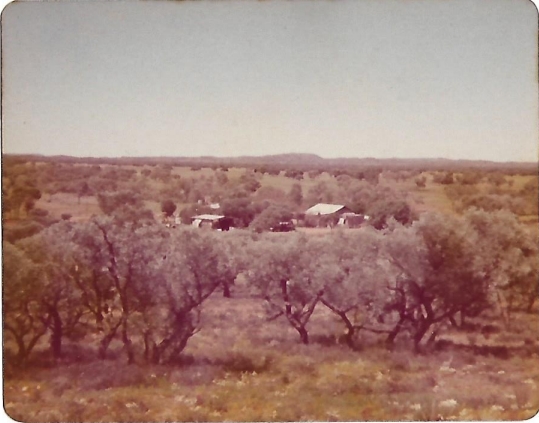
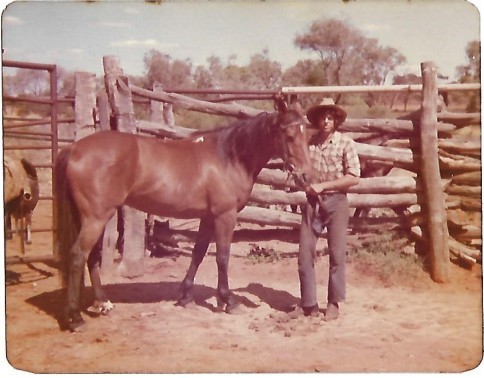
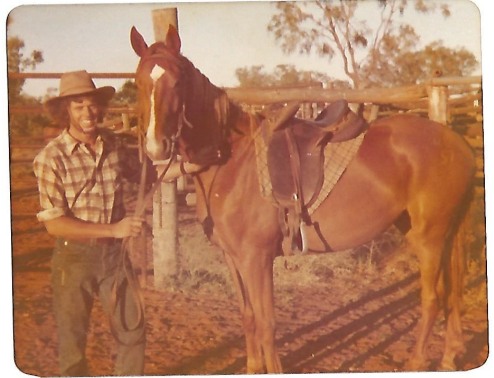
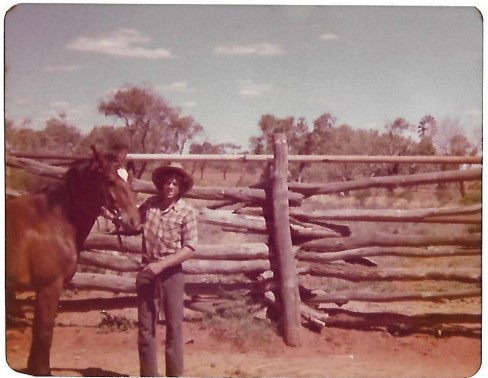
“There were some really hard times for the boss and the missus. In the 1960s there was a drought that went for a few years that nearly wiped them out. The boss and a couple of aboriginal jackaroos rounded up the remaining cattle, left the missus and their two kids behind and trucked the cattle to South Australia where they walked ‘the long paddock’ roadsides for two years until the drought broke at Ringwood. They then took the cattle back to Ringwood to start again.
When I arrived at Ringwood in May 1978 it was obvious that the station was still struggling. Everything was old and worn out. When we weren’t working the cattle the boss had myself and the other jackaroo doing fence repairs. However the boss didn’t have money for steel pickets or chainsaws so we used axes to chop down gidgi trees for fence posts. One tree – one fence post. Overall we replaced a couple of km of fencing.
Before the muster season started in June we brought all of the horses in from the home paddock where they were kept in the off-season. The horses hadn’t been ridden in 6 months and were frisky. We spent a week saddling and riding them which was like being a rodeo rider. The horses were then galloped in a dry creek bed to get them used to being worked again.
The boss hired a couple of additional aboriginal jackaroos and we then got on with mustering – back to long days in the saddle, sleeping in the open, a wash every 4 or 5 days, salt beef and damper. Sounds romantic now but, as an 18 year old Melbourne boy, I often wondered why I was out there and not playing football and chasing girls back home. 1978 turned out to be a great year for Ringwood Station as beef prices sky-rocketed. We sent over 2,000 head to market and branded 2,000 calves. Cattle sold for an average of $800 each so that gave the boss an income of $1.6 million. In 1978 houses in Melbourne were selling for $60,000 so $1.6 million was a fortune. I believe the boss made the same amount of money the next year as well. My wage working at Ringwood was $60 per week plus food and board ie. sleeping in dry creek beds under the stars eating salt beef and damper for a fair bit of the time.
The attached pics are from Ringwood Station taken in October 1978. …”
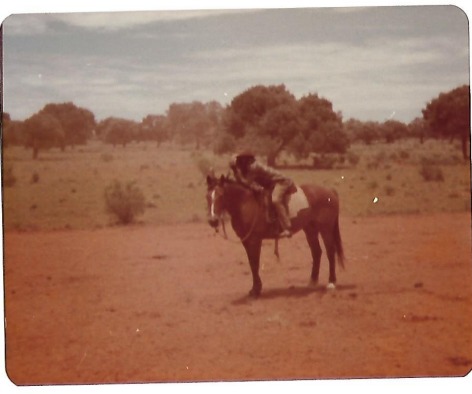
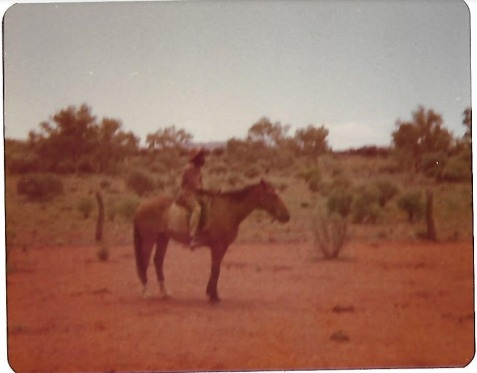
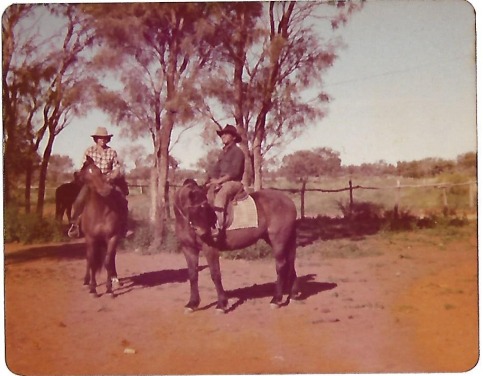
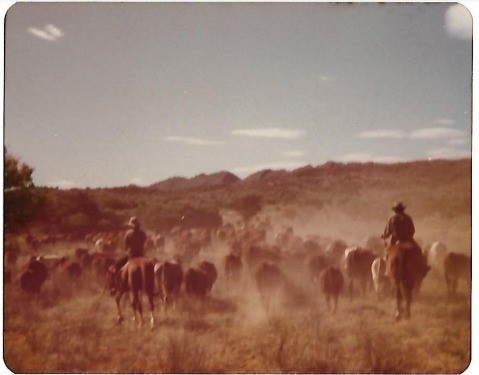
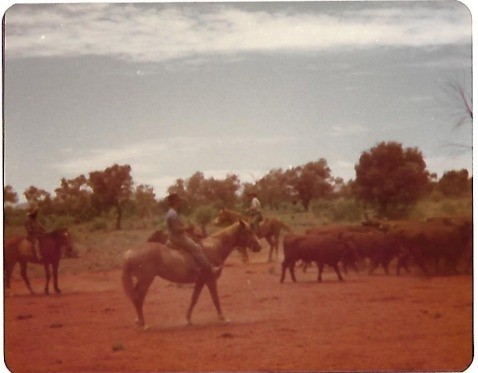
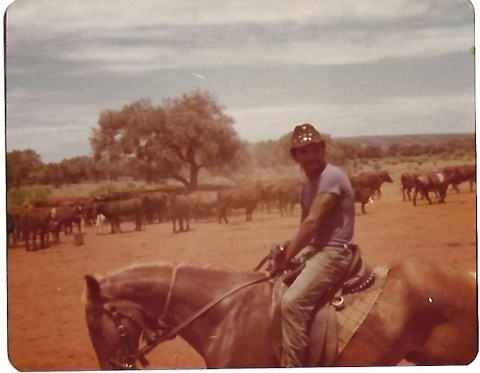
Michael also gave us a heads up to more historical Ringwood photos in archives, many thanks! If anyone has photos of the Ringwood horses we got back in earlier times or their descendants, or any info or photos for background, it’s very much appreciated.
